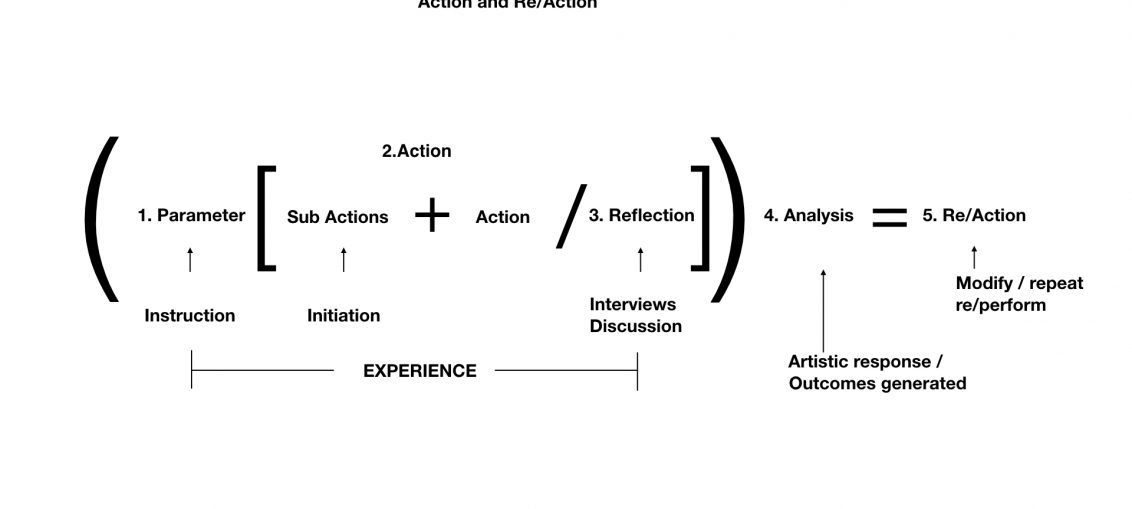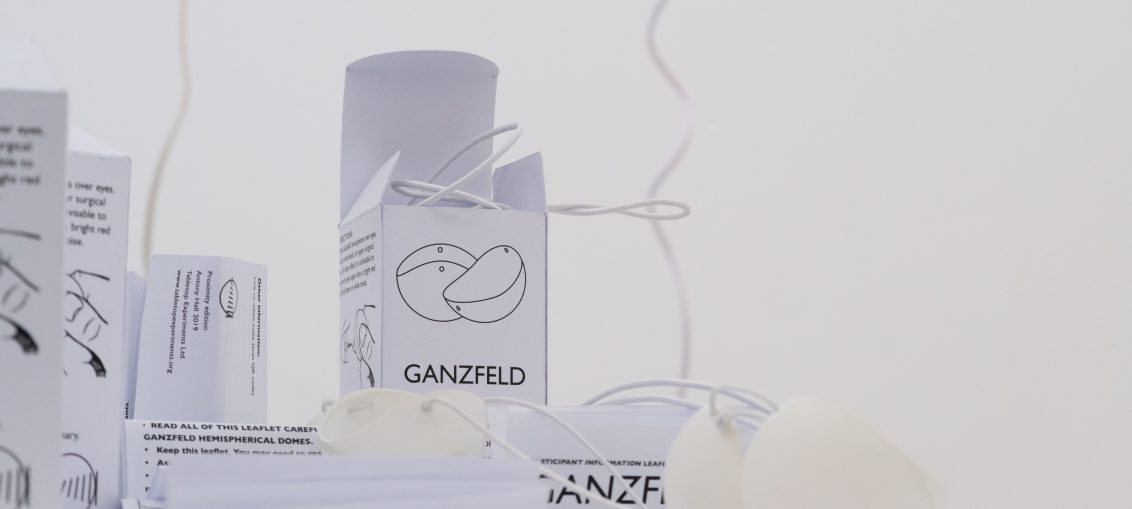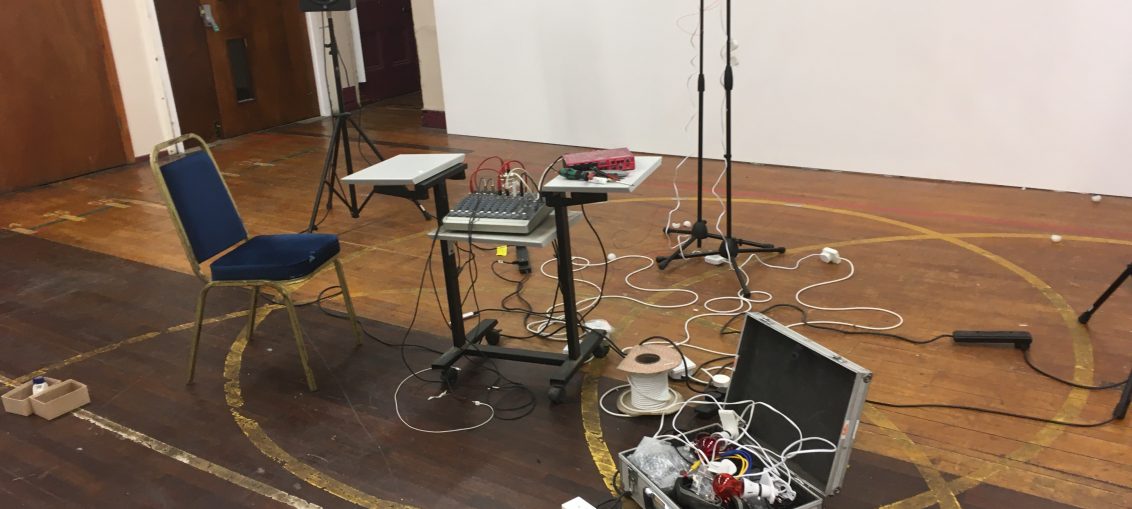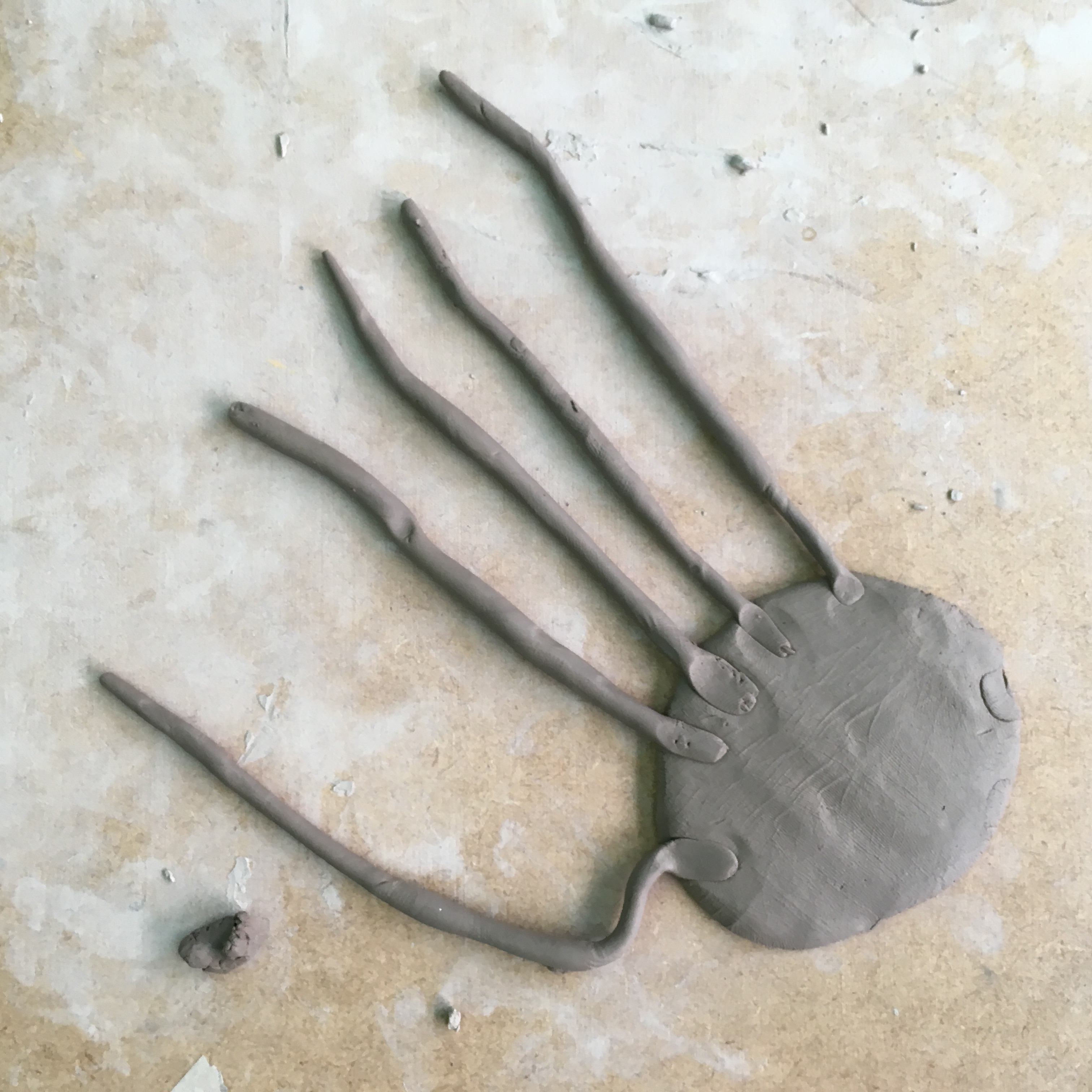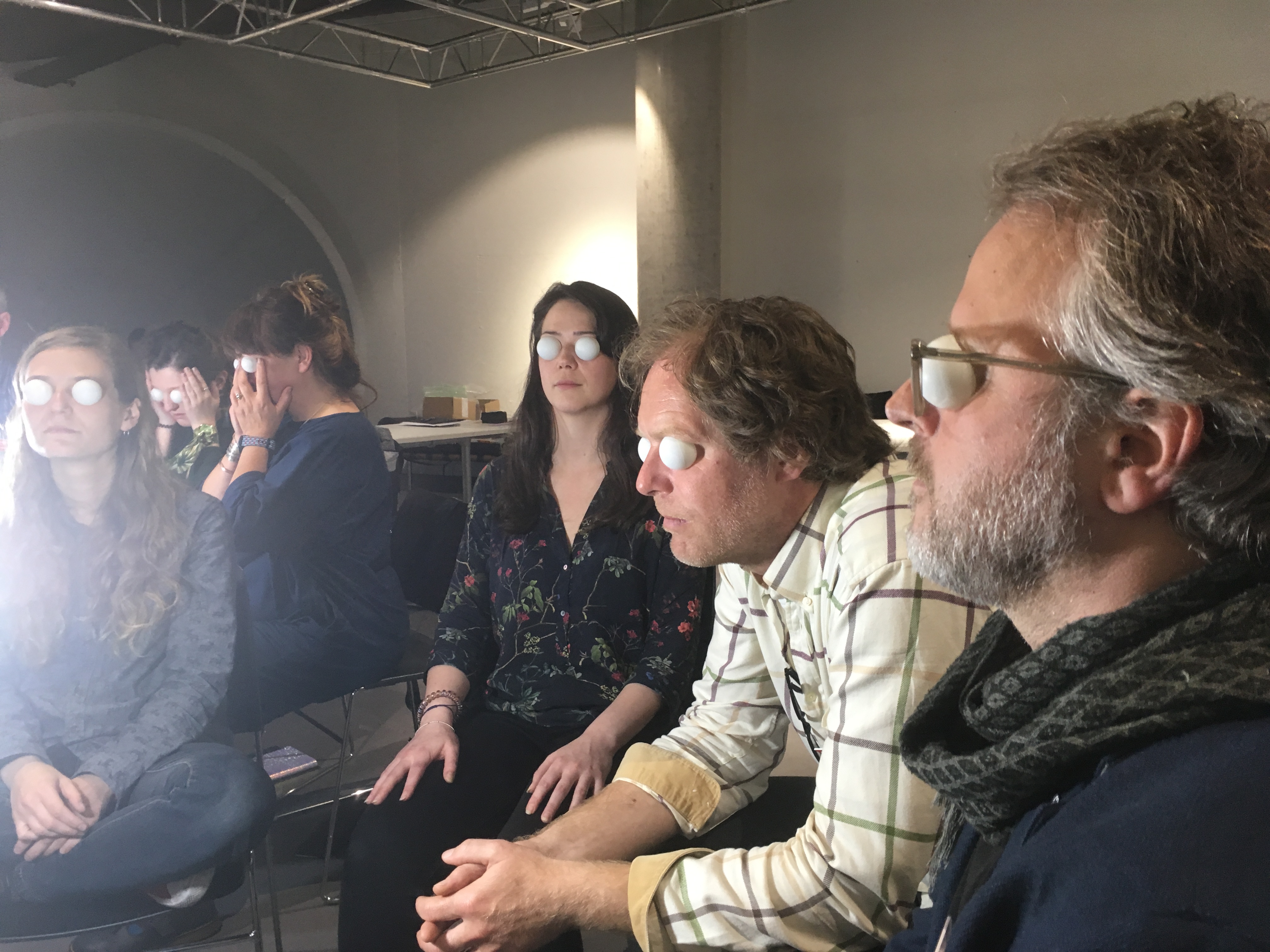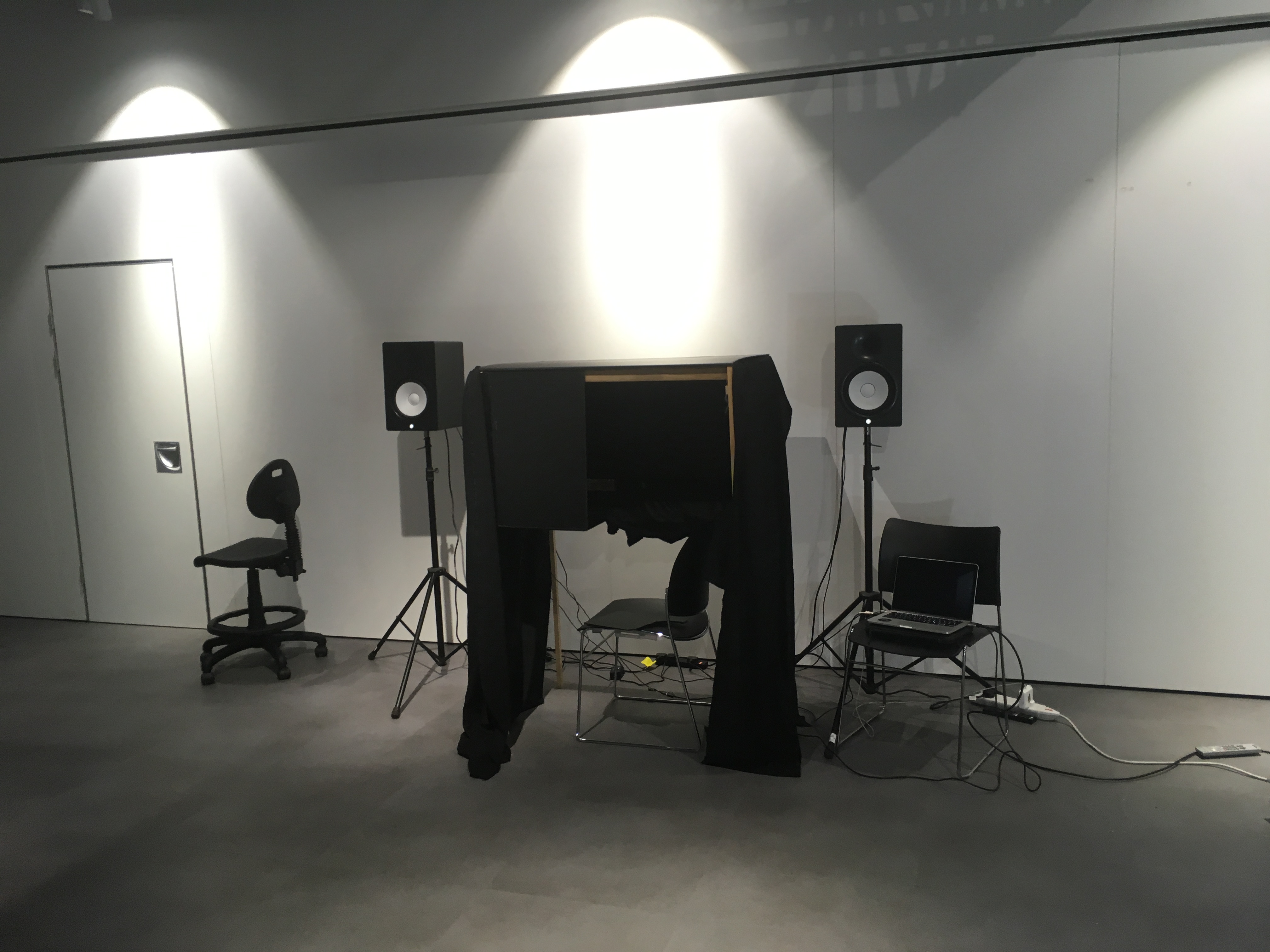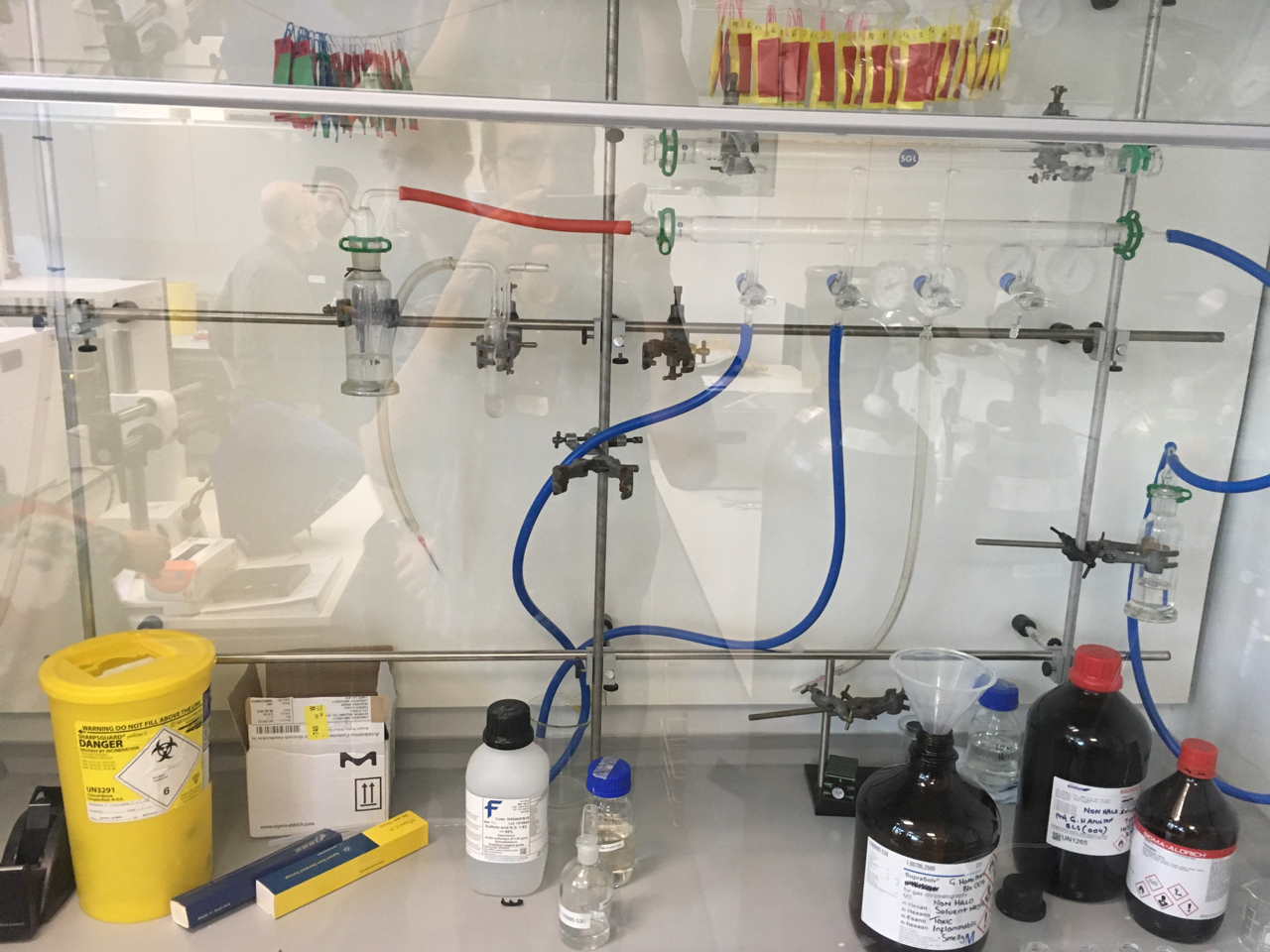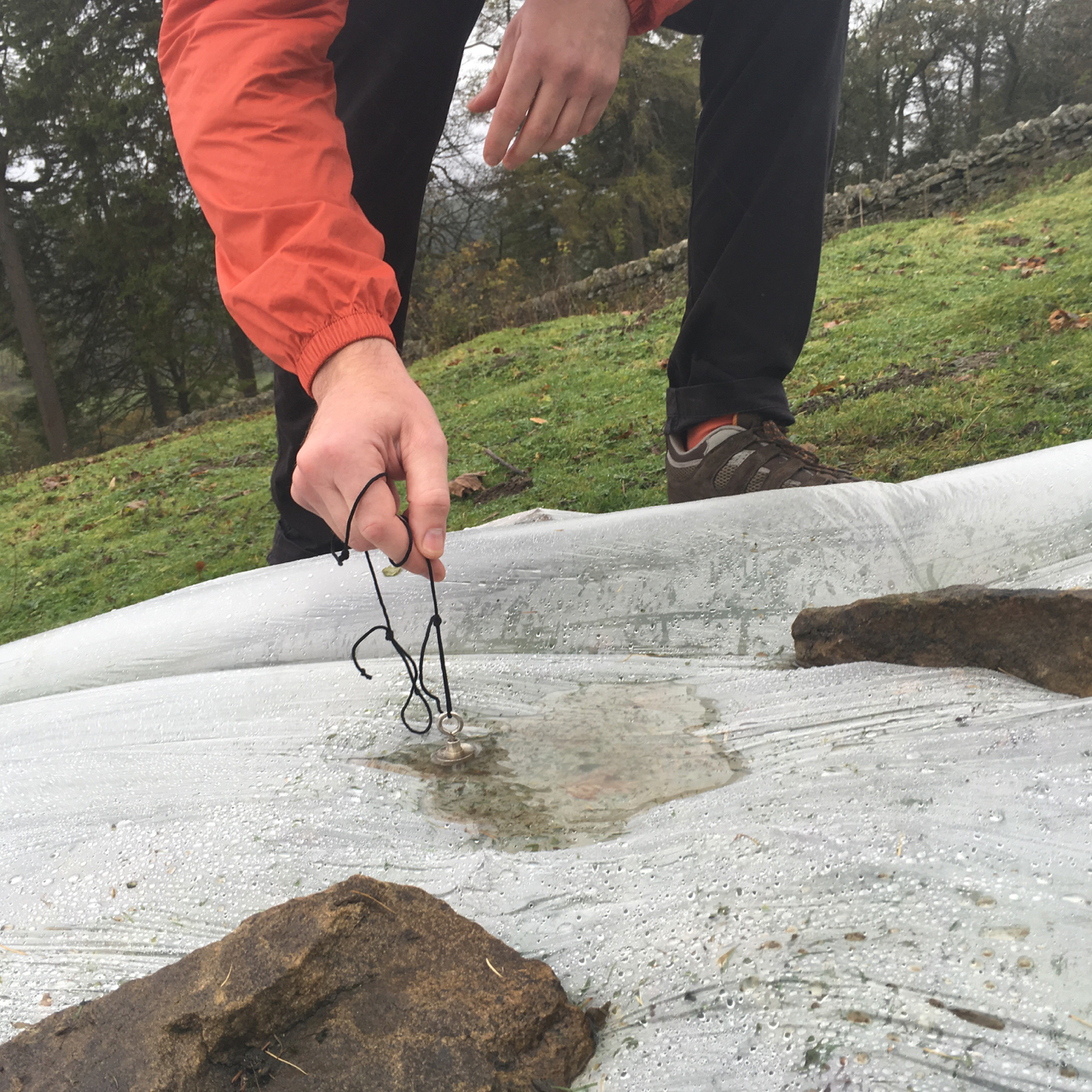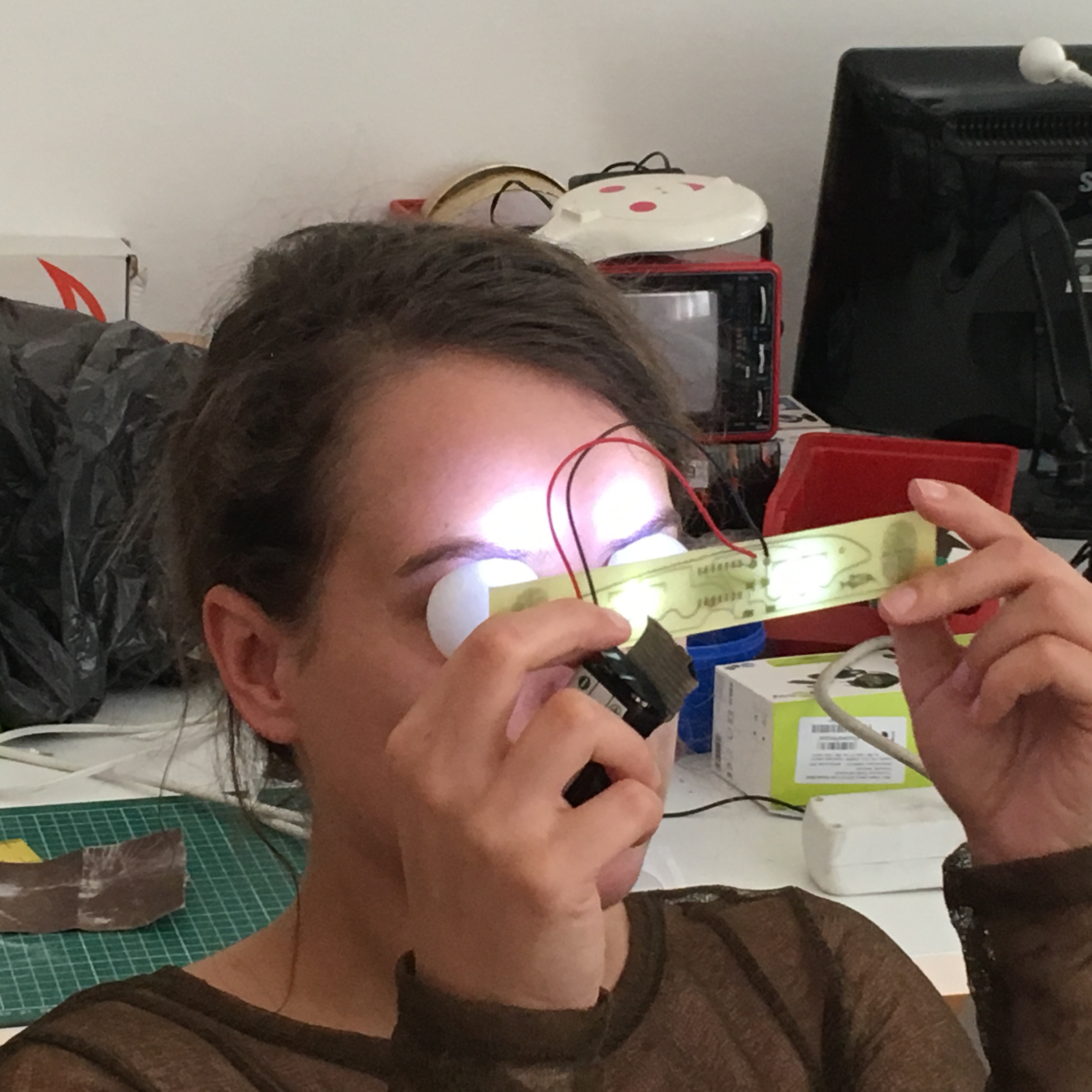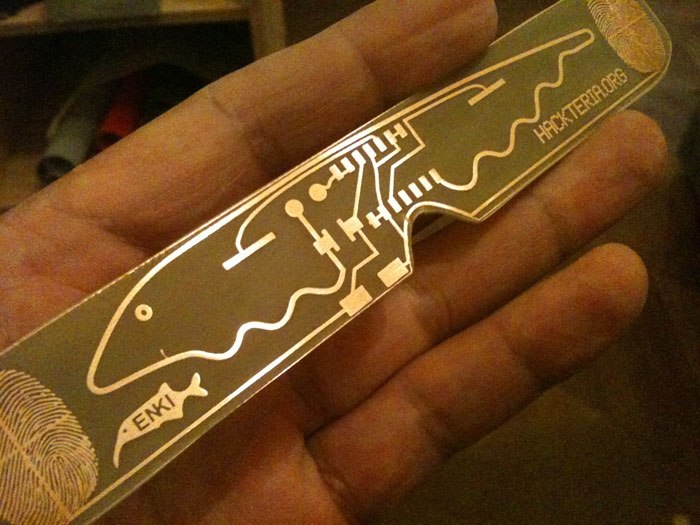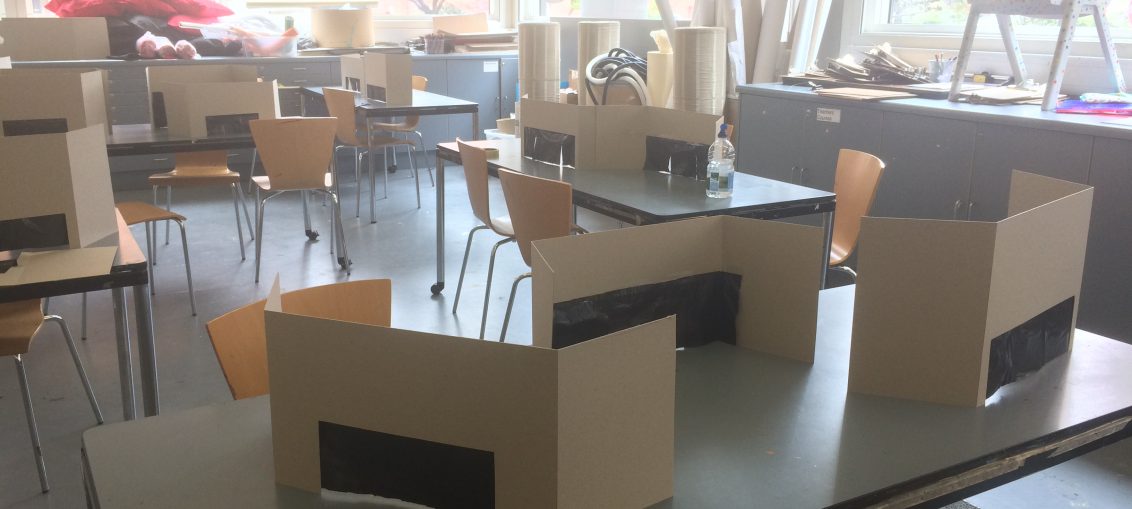A ‘Re/Action’ is a form of experiential art which resembles a workshop and consists of a series ‘actions’ performed or experienced by participants who interchange between roles of experimenter and audience. The focus is on reflection and introspection, for both the experimenter and participant. The process should generate new questions and evolving iterations for future action and re/action. 1. Initiation: Preparatory sub-actions, questionnaires and tasks that serve as cognitive primers which inform the following actions. 2. Action: The experience [an experiment] This should include qualitative and quantitative measures, further questionnaires, biometric data [sweat response / Heart rate] that feeds back into the experience. Importantly the process and apparatus of data collection are part of the experience. 3. Reflection: Interview and discussion. This should comprise of structured
Tag: workshop
Mirror Gaze Experiment @MSP
I have been working with Manchester Science Partnerships to develop a range of workshops for their customers, the resident companies that use the park. The first session was the 'mirror gaze experiment'. During the mirror gaze experiment [MGE] participants are asked to stare at their own reflection in a mirror in a nearly dark room. An outline of the head is visible as a faint silhouette. In this state of partial sensory deprivation, the brain struggles to make sense of the information it sees. Forms and shapes begin to emerge as if from nowhere. For many observers, these develop into vivid visual hallucinations “monsters, archetypical faces, faces of relatives, and animals” (Caputo, 2012; Bortolomasi et al., 2014). This
Proximity – @ Paradise works 11/12/2019
GANZFELD Translucent White Hemispherical Domes x 2 45mm diameter. Handmade signed edition of 20. Image: Anya Stewart Maggs Images from the Proximity show at Paradis works; I created these handmade cardboard box containing two ‘Ganzfeld Hemispheres’. These are translucent white domes perfectly shaped and crafted to fit in the eye socket, with elastic strap and small ceramic bead for adjustment. Inside are a set of instructions. A signed edition of 20 was produced as a workshop resource. The work is activated through its use, and the experiences that come through its use, and continued practice. Ideally, it should be stored alongside other items in the medicine cabinet. [See the current version of this workshop - Perception without object] I also showed a series of transcripts
Concerning the inwardly generated image
Testing the autoscope
Extracts from an experiment/performance with the Autoscope, to see if the feeling of disembodied/remote presence is amplified through taking on a challenging physical task, and to explore how this affects our perception of the landscape. Thanks to Andrew P Brooks for film and photography. "Autoscope builds on laboratory-based simulations of out of body experiences; the portable device allows the participant to freely navigate the world, experiencing themselves in 3rd person, as part of the landscape via a live video feed to a head-mounted display. The visual mechanisms are important in this illusion, but tactile and sonic stimuli further strengthen the effects. https://www.youtube.com/watch?v=yY7bs2Lih0Y&t=386s
Sum Total Of All The Actions 7
Sum total of all the actions
Seven practical experiments
A manual for self-experimentation and a template for performance / A workshop on perceptual illusion and art. https://www.eventbrite.com/e/seven-practical-experiments-tickets-72221088219 'Seven practical experiments' is a new piece of work for by Antony Hall, developed through an exploration of perceptual illusion, and the methods used in experimental psychology. By taking part in this workshop, you will both 'experience' the work and 'perform' the experiments; in doing so you will become the work. The experiments will be preceded by a session of Feldenkrais led by Teresa Brayshaw. Feldenkrais is a method of enhancing self-awareness through movement and the heightening of bodily perception. Following this activity, you will then be guided through the 'seven practical experiments' and given space to reflect and discuss what you have experienced.
Action Intention Paradox
In this experiment, which is now renamed the 'Alien Hands Experiment' one participant [A] places their hands under a flat-screen monitor. They then see what seems to be their own hands under the screen when in fact these are someone else's hands [B] who is mirroring their actions. The effect can be quite uncanny especially if the appearance of the hand contrast with their own [in scale, age or colour. Participants work together to lead or mirror the movements of what appears to be their own hands under a screen. After a short time, participants experience strange sensations which oscillate between a loss of agency over their own hands and feeling agency over someone else's hands. Action Intention Paradox uses a
Clay Hand Experiments
Workshops at Manchester City Art Gallery The aim was to deliver an engaging fun activity for all the family which related to the theme of the body and ideas around perception illusion referencing the Leonardo show as well as the Bridget Riley drawings in the Gallery. The workshop was open as a drop-in open to the general public and over the 8 days, we had around 800 people take part in total. The workshop served as an introduction to the idea of ‘perceptual and multisensory illusions’ and was based around my Clay Hand Experiment. I asked participants to work collaboratively to create their own hands and 'unfeasible objects 'with which to perform their own experiments on each other. It provided a
[Re]Mapping perception
Documentation from the [Re]Mapping perception workshop at LJMU 2 May 2019 Here is the original invitation... A workshop for artists/researchers engaging in a wide range of practice-based and artistic research methodologies. It aims to explore interdisciplinary methods through a series of provocations in embodied multisensory experience, designed to enhance our perception and self-awareness. The workshop provides an open space for participants from different fields to meet, communicate findings, share paradigms, and explore the value of sensory perception and awareness in our research. It also offers an opportunity to meet Madeline Schwartzman and gain insight into the works discussed in her new book See Yourself X: Human Futures Expanded. Her public lecture follows the workshop [ Places can be booked here https://www.eventbrite.com/o/antony-hall-19862154602 ] [Re]Action Lab is an
Mirror Gaze Box
A rapidly prototyped blackout box for the mirror gaze box, this is to create a dark space for the Mirror Gaze Experiment. Inside is an Infra Red LED spotlight and modified web camera. The camera films the participant in real time from behind a two-way mirror, as they experience the illusory effect of sensory deprivation. Mirror Gaze Box - prototype
Synanet workshop: Disrupt Encode Consolidate
Notes for the collaborative Art & Bio-science Workshop at Lancaster University, UK on Monday 17th to Wednesday 19th December 2018I had a very interesting 3 days at Lancaster University participating in the Synanet workshop. The idea was to bring together interdisciplinary practice across the sciences and arts, to explore ideas in neuroscience research and BioArt. The workshop “aimed to DISRUPT dogmatic thinking across these disciplines, ENCODE new approaches and insights through shared interactions and CONSOLIDATE these ideas through artistic expression” https://cheapjack.github.io/DisruptEncodeConsolidate/ It consisted of scientific demonstrations and hands-on activity was to provide insight into the theory and practice of neuroscience research. FMRI [functional brain imaging] behavioural analysis in mice and Fruit Fly’s and Sand Fly’s, And some presentations about the “gut-micro-biome-brain interface”. Most interestingly “ …The workshop aimed to
Rubber/clay Hand experiment UoM
I supported some seminars on the Rubber Hand Experiment with undergraduate psychology students, presenting some of my research ideas [unfeasable objects and the Clay Hand Experiment] The idea was they experience the experiment for themselves before designing their own.
Fieldwork under the ‘Darkest sky’
I was invited by Annie Carpenter and Nicola Ellis to Allenhead Arts for a few days of art and science during the night of the Orionids meteor shower, hoping for clear yet dark skies. They had been resident artists there over the last few months https://www.acart.org.uk/ . In a continuing effort to make my activities more sustainable and portable, I decided to cycle from Penrith to a remote location in the heart of the North Pennines which boasts the darkest skies in the UK. I was one of the most hellish bike rides I have ever endured. And I am no stranger to big hilly bike rides. One of my typical problems when taking part in this kind of open-ended participatory creative
Navigations
The Ganzfeld [ 'total field' ] experiment is a form of perceptual deprivation, giving an experience of a uniform field of light [More information here] . has become a staple activity in my workshops. Rather than sitting still and listening to sounds I have been opening this up as a mobile activity, or 'navigation' as I have started to call it. It serves as an icebreaker, often requiring people to work in pairs to move through spaces, following ropes or sonic stimuli. The purpose is to heighten the participant's awareness through altering their perceptual experience of space. Participants become aware of new structures of light or start using the body in a different way in order to move, becoming more
Fieldwork / Night walk
I teamed up with artist Annie Carpenter to pull together a small group of artists and friends for a night of ‘fieldwork’. We organised an overnighter to do some experiments and have discussions together in the relaxed atmosphere of Middlewood Trust study centre; an off-grid permaculture farm. I had worked here before with [Annie and Sam Illingworth] doing some workshops with their students on a previous 'field research' style project. The concept captured my interest. We wanted to create a situation where we could work as well as have time and space to chat about ideas with others. My equipment consisted of my laptop, Arduino, [with a relay shield for experiments] and some electronics, GoPro, 360-degree camera. Also a heavy rechargeable
Electronic Taste Perception Workshop – Radiona
[Here is some documentation from one of the activities for the 're-mapping the senses workshop earlier this year...] Our sense of taste is directly affected by the colour and smell of the food. Experiments prove that the colour of a drink affects our perception of its sweetness for example. Altering the sound of the food, say adjusting the high-end frequencies while eating crisps can also affect our perception of the crunchiness of those crisps [see the paper here. Playing with these assumptions and expectations can create heightened food experiences. There have been a number of studies that suggest it is possible to simulate Sweetness, bitterness, sourness. Specifically, we test these settings as claimed by the Vocktail project [see below] to simulate the following sensations... Sour: magnitude of current: 180
Clay Hand Experiment – Whitworth Art Gallery
This was the first of the public workshops performed specifically for my research. My experiments so far have taken place as 1-1 sessions in artists studios or at the university. In a more open drop-in format, the participants were invited to experiment on themselves. Opening up the environment to one of play rather than pure participation. Breaking the experimenter/participant loop, creating a flexible relationship between myself and the participants. This was more in keeping with the idea of a phenomenological investigation allowing the experience to ‘unfold’. This had a dual effect of actively involving and empowering the participants while being able to observe the process from the outside. This meant notes and make recordings could be taken more effectively. Further reading:Read more
Clay hand experiments at Radiona
Some documentation from the workshop at Radiona in Zagreb [See Re-mapping the senses workshop] [For more information about the clay hand experiment see here] [For more information about the clay hand experiment see here]
Fish-brain-machine / Radiona workshop
After constructing the Fish-brain-machine PCB circuits we spent some time experimenting and describing the hallucinogenic visuals created by the stroboscopic light. The ping pong balls over the eyes diffuse the LED light, making for a more intense effect - and enabling use with eyes open. Here they describe some of the effects including seeing colours and 'a strange experience' of seeing with only one eye - I get this exact same feeling when using it. It is also hard to know if your eyes are open or closed. [See also Re-mapping the senses workshop ] https://www.youtube.com/watch?v=Lwne5xICLkI
Radiona workshop, Zagreb
I'm doing a workshop related to my research, perceptual illusions and altering perception through experiments, Clay hand illusion and other activities based on sound and light and taste, at Radiona Zagreb, 21-22/04/2018 https://radiona.org/ check out the web Re-mapping the senses workshop page and resources here...
Fish-brain-machine
As part of my Enki exhibition at Kapellica Gallery in Ljubljana 2012, I developed a related perceptual illusions and brain hacks workshop with Marc Dusseiller [Hackteria], as part of the gallery’s Biotech program. We came up with the idea to make a special issue circuit for the workshop and we set to work designing a circuit the encapsulated the Enki project in miniature. After a couple late nights, we came up with this super cool PCB design. Marc worked hard to create a fully functional efficient design, which was also aesthetically pleasing. The outline of the fish is also the ground in the circuit. This has to be the most ultra minimal brain-machine available to build. 6 components. We spent further
Acupuncture, brainwaves, and electric fish
Some documentation from a day working with Greg Byatt developing a system to work with the IBVA [Brainwave visulisation] interface. Such as attaching the Electric signal discharge output from the Electric Fish to acupuncture pads placed on our arms, to see if we could perceive the signal and also seeing how the fish behaved. No conclusive results. More time needed! In preparation for the next Enki event, we spent the day testing the neuro-graphic interface; as an experiment, we patched a strong frequency via MIDI to a MAX patch so our brains were modulating all kinds of strange sounds. Later this will combine with the Enki interface as a form of feedback. In this image you can see the graphics of the brain activity and
Enki Manchester Science Museum
Some of the early experiments for the Enki project at Museum of Science and Technology Manchester 2007... We recorded brainwave data and monitored the behaviour of the electric fish during the experiment. The electrical activity of the fish is experienced as sound and light via ENKI (a stroboscopic high frequency led placed close to eyelid) and the natural binaural frequencies produced by the interaction and communication between Black Ghost Knife fish. The participant's bio-electric field was connected to the aquarium allowing the fish to sense a human (bio)electric image or presence. Museum of Science and Industry Manchester, 7th October 2006
Workshopology
During my visit to Ljubljana in I was introduced to the ‘Workshopology’ concept and network. The idea is to bring together like-minded ‘Workshopologist’ to discuss methods and best practice in this area. More specifically the participants are dealing with similar subject matter. Open-source collaborative approaches to teaching and learning in DIY electronics, science and biotech. Taking part are Artist, engineers bio-hackers and scientist and various other creative ‘workshopologists’. We discussed the workshop as a tool for delivering and sharing knowledge outside of traditional educational frameworks, how types of workshop can be categorised and analysed. Outside of my own personal workshop practice, it was interesting to think about iLog workshop as a take on the electronics kit where limitations are provided as
The Sensorium of Animals
Electroreception in Experimental and Historical Media and Design Research. I was pleased to be invited to take part in this project along with an interesting selection of artists working with sound animals and the invisible world of signals as well as a cognitive neuroscientist and an expert in electric fish... "This research project explores the possibilities of technology-mediated systems to alter the human sensory apparatus from artistic-experimental and media historical angles. One part of this research focuses on possibilities of expanding the human sensory system beyond its biological limits, taking inspiration from sensorial abilities found in certain animals. Artistic-experimental systems, for instance in the field of wearable technology, will be tried out, researched and made available. The other part of this research
Perceptual Portraits
The ‘Perceptual Portraits’ workshop took place alongside the ‘To be Human’ [1] exhibition at Manchester Art Gallery, and was open to the public over 4 weeks. After drawing portraits of each other, both with and with, without looking at the paper, participants sat face-to-face around tables and placed their hands through a curtain into a box. Inside they found a lump of clay with which they were instructed to sculpt a portrait of the person sitting opposite. The resultant sculptural portraits ranged from simple smooth finger pressed forms, to heads with grossly distorted facial features. Post-activity discussions took place on how the visual result related to the perceived imagined form that was created in their mind's eye. Typically, the features
Amplitude Modulation Workshop
I met Martin Howse in 2009 when he invited me to do a workshop for his micro research series in Berlin. At the time he had a fantastic apartment with a large garage space for a studio. The large table at its centre became sprawled with electronics by the end of the day. I had the opportunity to take a look at some of his projects, wonderful hand-drawn circuits burnt and encrusted that looked more like remnants from some other device of unknown function. For this workshop we investigated Amplitude Modulation, turning light into sound, use of the LM chips as an amplifier and using light sensors as an input, and making LEDs and lasers transmit sounds and signals through light
